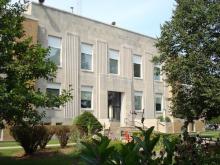Indianola FTTH Business Plan Blasting Forward
Indianola Municipal Utilities (IMU) in Iowa finalized its business plan for citywide Fiber-to-the-Home (FTTH) service earlier this month. The decision marks a shift in how residents receive services in the community; IMU will take over from current partner Mahaska Communications Group (MCG) and expand to offer triple-play citywide.
Up To Now
Indianola created its municipally owned broadband utility back in 1997 and invested in fiber-optic backbone infrastructure a year later. They used the investment to backhaul fixed wireless service beginning in 2002 and by 2006 had developed a partnership with MCG. Expanding fiber to residents didn’t start until 2010 and two years later, MCG began offering triple-play services within certain areas of the city. Last year, the community commissioned a feasibility study to examine the possibility of using existing fiber resources to all premises in Indianola.
Under the current agreement between IMU and MCG, wholesale rates for residential connections are $30 per month and $100 per month for commercial connections. The feasibility study determined that the current rates “did not support expansion” to the entire Indianola community.
Trustees Say OK
Under the business plan approved by the Trustees at the May 8th meeting, IMU will step into MCG’s shoes and will buy out MCG’s existing 596 customers. IMU will be the FTTH retail services provider, offering triple-play of Internet access, VoIP, and IPTV. The network will work with Cedar Falls Utilities (CFU) on video services, connecting at the Des Moines regional data facility in order to reach them. IMU will have the opportunity to tap into about 7,350 potential residents and businesses in addition to MCG’s current customers.
The plan for expansion divides the city into 26 service areas but subscribers need to sign up early in order for the utility to connect their home. People who participate in early sign up will all have services activated at the same time. IMU has proposed rates for different services including:



